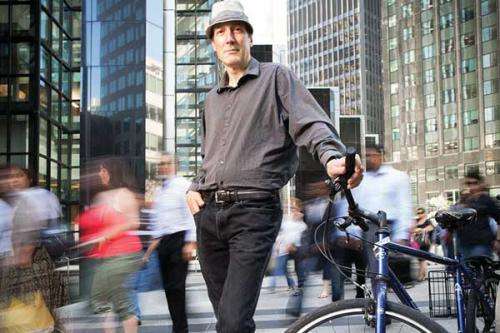Urban planners urged not to ignore city pedestrians

When most people think about urban transportation systems, they focus on infrastructure, including streets, subways and even sidewalks. University of Toronto researcher Paul Hess takes a much broader perspective.
"Transportation touches many issues," says the geography and planning professor. "It affects our quality of life. It affects energy use and the environment. And it affects social equity – that is, who has access to transportation and who doesn't?"
To that end, Hess studies how cities are designed and built to accommodate people's transportation needs. In particular, he is interested in neighbourhoods' suitability for walking as well as residents' access to cars and public transit. For instance, in one current project he is studying how immigrants who don't have driver's licenses or can't afford a car get by in the "car-dependent" outer suburbs of Brampton, Mississauga and Markham.
In another initiative, Hess is collaborating with the provincial transportation agency Metrolinx to investigate walkability in areas surrounding transit stations. Specifically, he is looking at whether pedestrians have access to safe, direct routes to public transportation hubs.
Ease of walking in the urban environment has grown in importance during the last 20 years, says Hess. "At one point, you never heard the term 'walkability,' but now real estate listings feature 'walk scores.' That's because walkable places are considered good places to live."
The problem, he continues, is that walkability now divides neighbourhoods. It may be highly valued within higher-income areas of the inner downtown, but in lower-income communities of the inner suburbs – such as those in Scarborough and north Etobicoke – walking is less a lifestyle choice and more a matter of necessity, since residents have no or limited access to cars. Within these neighbourhoods, however, there are few pedestrian-friendly zones – and changing social patterns may be responsible for the situation.
Originally, inner-suburban neighbourhoods were built around schools and single, detached homes. But with more families living in sprawling, high-rise apartment buildings, children are forced to walk long distances and to cross large, busy roads in order to get to school. Hess is working to raise awareness of these challenges in marginalized communities.
"If we can get engineers, planners and pedestrian advocates to work together better, then we'll shift from the old outcome of getting cars around to a new outcome of increased walkability," he says.
Provided by University of Toronto
















